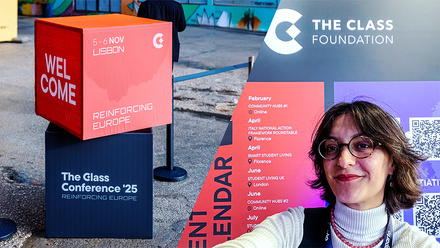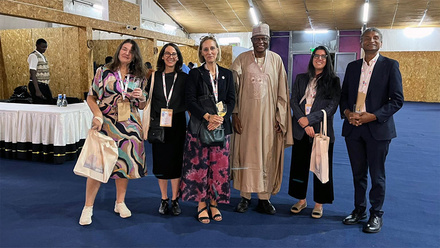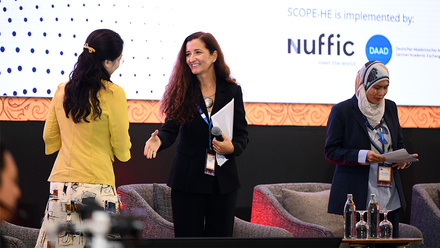EAIE New Knowledge Alert: June 2020

As we reach the halfway point in 2020, it’s hard to decide if the last six months have been in slow motion or overdrive. With the COVID-19 pandemic bringing physical mobility to a standstill for most of us, there’s certainly a case to be made for the slow motion theory. At the same time, the pace of developments in our working lives has been nothing short of frenetic. This is also reflected in the strong output of new publications, research and analysis over the last several months.
Sure, some of us may be looking to seriously disconnect as we head into the summer. But, if you’re seeking out new information and insights in our field, a plethora of interesting, recently-produced materials is at your fingertips.
Yes, it’s all about COVID-19
With good reason, of course, our attention has been heavily focused on all aspects of the COVID-19 crisis and its effects on the field of higher education. Consistent with that, a number of research reports and analytical pieces have been released over the last couple of months providing a wide range of views on the reactions and perspectives of key stakeholders around the world.
Two examples of such research at a global level include the work conducted by the International Association of Universities (IAU) and IDP Connect. IAU’s Impact of COVID-19 on Higher Education around the World report was released in late May and provides insights from 424 higher education institutions located in 109 different countries. This is the first in a three-part global survey exercise focused on COVID-19’s effects that IAU plans to carry out in 2020 and 2021. The current report endeavours to offer a general assessment of COVID-19’s effects on higher education, with additional focus on the pandemic’s impacts on matters of research, teaching and learning and community engagement. Among its key findings? Nearly 60% of respondents indicated that all campus activities had stopped, and the institution was completely closed; this figure jumped to 77% among African respondents, a detail that highlights some of the important regional differences at play around the world.
IDP Connect’s early May 2020 report, titled International Student Crossroads: Demand for On-campus Education amidst COVID-19, draws on the results of surveys completed by more than 6,900 international applicants, and aims to parse out the attitudes and motivations of students focused on study in Australia, Canada, New Zealand, the United Kingdom and United States. At the time of publication, a strong majority of these individuals (69%) indicated that they aimed to commence their upcoming studies as planned—although another 26% weren’t sure about their plans.
Regional round-up
In terms of regional perspectives, various pictures have recently emerged from Europe, Latin America and Asia. The EAIE’s own March 2020 Coping with COVID-19 report is a standout here, providing perspectives from 628 different higher education institutions in 38 different countries across the European Higher Education Area. In June 2020, UNICA, the Network of Universities from the Capitals of Europe, produced insights from a survey completed by 36 of its 53 member institutions in an aptly titled publication, COVID-19 - Challenges and good practices at UNICA member universities.
For those looking for information on key developments in Latin America, UNESCO IESALC (International Institute for Higher Education in Latin America and the Caribbean) produced COVID-19 and higher education: Today and tomorrow. Impact analysis, policy responses and recommendations in early April. This document outlines a series of anticipated short-, mid- and longer-term impacts of the COVID-19 crisis; considers public policy and institutional responses to the pandemic; and suggests a series of recommended strategies and measures that can be taken by national and institutional actors in order to “prepare for tomorrow”.
Meanwhile, a special issue of the Singapore-based HEAD Foundation’s Higher Education in Southeast Asia and Beyond publication was produced in June 2020. Among other contributions, How is COVID-19 impacting higher education? brings to the fore perspectives from ASEAN and nine different Asian and Asia-Pacific countries with respect to the pandemic and its effects.
National notes
Speaking of national-level perspectives, there is plenty of information surfacing in that space, as well. Preliminary findings about the effects of COVID-19 on the international education community in Canada were published by the Canadian Bureau of International Education in early Spring 2020; a new round of survey findings is due to be released in the coming weeks. US international education organisations are similarly gauging perceptions and realities there. This can be seen clearly in the International Institute of Education’s (IIE) COVID-19 Snapshot Survey series, the American Council on Education’s Pulse Point Surveys and NAFSA’s financial impact survey work.
Here in Europe, the British Council has been conducting surveys focused on the impact of international student mobility from key global markets to UK universities, presenting their analysis via a series of blogs and online videos. For its part, Nuffic produced in mid-May a report titled How is COVID-19 affecting international students plans to study in the Netherlands? Drawing on responses from 941 prospective students from countries in which Netherlands Education Support Offices (NESO) are located, the study found that 80% of these students are still interested in studying in the Netherlands and 67% hoped to start, as planned, in September 2020. But, many also registered concerns and uncertainties, most frequently in relation to “travel restrictions and visa procedures, finances and scholarship possibilities.”
Clearly, an enormous amount of data is being generated around our COVID-19 experiences, and there will certainly be more to come.
Please, anything but COVID-19
Reaching your limit on COVID-19 research and analysis? For those of you itching for updates in other key areas, some of the following resources may be of interest.
Teaching, learning and innovation are at the heart of many important ongoing conversations in higher education across Europe and around the world. For example, the 2020 EDUCAUSE Horizon Report: Teaching and Learning Edition presents for consideration fifteen trends, six emerging technologies and practices, and “four possible future scenarios for postsecondary teaching and learning”. Additionally, nine “implications essays” explore the findings from this annual technology-focused publication from a range of national and sector-specific perspectives.
The Economist Intelligence Unit’s New schools of thought: Innovative models for delivering higher education was commissioned by the Qatar Foundation and bases its findings on a wide-ranging literature review and set of interviews conducted between August and December 2019. This report offers up five models of higher education institutions – including online, experiential, cluster, partnership, and liberal arts college configurations – all with an eye on what “future-proofing” might look like for the sector.
A distinctly European perspective is delivered by the European University Association’s (EUA) Internationalisation in learning and teaching Thematic Peer Group Report. The publication grounds itself in a notion of “internationalised education”, which is described as synonymous with “good education” and is embedded in an understanding of internationalisation of higher education as a “crucial sustainability strategy which should be viewed and approached in the context of the United Nations’ 2030 Agenda and its Sustainable Development Goals”. The subject of the common good is also front and centre in the DAAD-commissioned report on Internationalisation in Higher Education for Society (IHES). Consistent with its subtitle, this research examines the “social responsibility component of internationalisation”, with attention to conceptual matters, existing research on the subject and an array of good practice examples.
As always, the student experience is also a matter of central interest. Here, we note the yearlong commemoration of the Journal of International Students’ 10th anniversary, featuring a series of commissioned essays to mark the occasion. A largely US perspective on employability and international education is featured in the CAPA-produced Career Integration: Reviewing the Impact of Experience Abroad on Employment No. 3, while the EAIE’s own Summer issue of Forum magazine places Employability for the 21st century in the spotlight. Finally, a wide-angle look at Refugees and Higher Education is presented in the newest volume of the Brill series on “Global Perspectives on Higher Education”.
What’s a keen reader to do with so much to choose from? Grab your lemonade, find that perfect spot for comfortable reading and enjoy a lovely, safe and (intellectually) gratifying summer!






